Hoops Rumors is checking in on the 2025 offseason for all 30 NBA teams, recapping the summer’s free agent signings, trades, draft picks, departures, and more. We’ll take a look at each team’s offseason moves and consider what might still be coming before the regular season begins. Today, we’re focusing on the Phoenix Suns.
Free agent signings
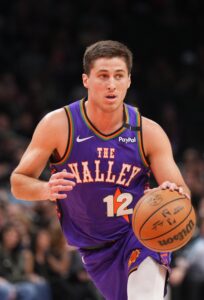 Collin Gillespie: One year, minimum salary. Re-signed using minimum salary exception.
Collin Gillespie: One year, minimum salary. Re-signed using minimum salary exception.- Nigel Hayes-Davis: One year, minimum salary. Signed using minimum salary exception.
- Jared Butler: One year, minimum salary. Non-guaranteed (Exhibit 9). Signed using minimum salary exception.
- Damion Baugh: One year, minimum salary. Non-guaranteed (Exhibit 10). Signed using minimum salary exception.
- David Duke Jr.: One year, minimum salary. Non-guaranteed (Exhibit 10). Signed using minimum salary exception.
- Tyrese Samuel: One year, minimum salary. Non-guaranteed (Exhibit 10). Signed using minimum salary exception.
- Alex Schumacher: One year, minimum salary. Non-guaranteed (Exhibit 10). Signed using minimum salary exception.
- Note: Schumacher has since been waived.
- Jaden Shackelford: One year, minimum salary. Non-guaranteed (Exhibit 10). Signed using minimum salary exception.
- Note: Shackelford has since been waived.
Trades
- Acquired Mark Williams and their own 2029 second-round pick from the Hornets in exchange for Vasilije Micic, the draft rights to Liam McNeeley (No. 29 pick), and either the Timberwolves’ (top-five protected), Cavaliers’, or Jazz’s 2029 first-round pick (whichever is least favorable).
- Note: The Suns had traded the Hornets their 2029 second-round pick in a previous deal.
- Acquired Jalen Green (from Rockets), Dillon Brooks (from Rockets), Daeqwon Plowden (two-way; from Hawks), the draft rights to Khaman Maluach (No. 10 pick; from Rockets), the draft rights to Rasheer Fleming (No. 31 pick; from Timberwolves), the draft rights to Koby Brea (No. 41 pick; from Warriors), and either the Thunder’s, Mavericks’, or Sixers’ 2026 second-round (whichever is second-most favorable; from Rockets) in a seven-team trade in exchange for Kevin Durant (to Rockets), the draft rights to Alex Toohey (No. 52 pick; to Warriors), either the Warriors’ or Nuggets’ 2026 second-round pick (whichever is least favorable; to Timberwolves), and either the Suns’ or Rockets’ 2032 second-round pick (whichever is most favorable; to Timberwolves).
- Note: Plowden was subsequently waived.
Draft picks
- 1-10: Khaman Maluach
- Signed to rookie scale contract (four years, $27,386,799).
- 2-31: Rasheer Fleming
- Signed to four-year, $8,685,386 contract. First three years guaranteed. Fourth-year team option.
- 2-41: Koby Brea
- Signed to two-way contract.
Two-way signings
- Koby Brea
- One year, $85,300 partial guarantee (will increase to $318,218 at start of regular season).
- CJ Huntley
- Two years, $85,300 partial guarantee (will increase to $318,218 at start of regular season); second year non-guaranteed (will increase to maximum two-way protection amount on July 10 and to 50% at start of regular season).
- Isaiah Livers
- One year, $85,300 partial guarantee (will increase to $318,218 at start of regular season).
Departed/unsigned free agents
- Bol Bol (unsigned)
- Jalen Bridges (Celtics)
- Tyus Jones (Magic)
- Damion Lee (Ironi Ness Ziona)
- Monte Morris (unsigned)
- Mason Plumlee (Hornets)
- TyTy Washington Jr. (Clippers)
Other roster moves
- Signed Devin Booker to a two-year, $88,762,440 veteran contract extension that begins in 2028/29. Projected value of $145,760,888. Includes second-year player option.
- Bought out and stretched Bradley Beal (gave up $13,879,830 of $110,794,880 total guaranteed salary).
- Claimed Jordan Goodwin off waivers from the Lakers.
- Waived Cody Martin (non-guaranteed contract).
Salary cap situation
- Operating over the cap ($154.6MM) and above the luxury tax line ($187.9MM).
- Carrying approximately $187.9MM in salary.
- No hard cap.
- Full non-taxpayer mid-level exception ($14,104,000) available.
- Full bi-annual exception ($5,134,000) available.
- Three traded player exceptions available (largest worth $3,628,720).
The offseason so far
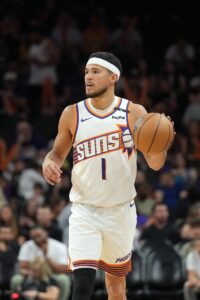 The Suns fell short of expectations in 2023/24, their first season with Kevin Durant, Devin Booker, and Bradley Beal on the roster together, earning the No. 6 seed in the Western Conference and getting swept out of the first round of the playoffs by the Timberwolves.
The Suns fell short of expectations in 2023/24, their first season with Kevin Durant, Devin Booker, and Bradley Beal on the roster together, earning the No. 6 seed in the Western Conference and getting swept out of the first round of the playoffs by the Timberwolves.
But that 49-win season actually looked pretty good in retrospect when compared to the all-out disaster that was ’24/25. Phoenix went just 36-46 last season and entered the offseason as the only NBA team that didn’t make the playoffs, didn’t make the play-in tournament, and didn’t control a lottery pick. The Suns were also the only club that made both a front office and head coaching change this spring, hiring Brian Gregory to replace general manager James Jones and Jordan Ott to replace coach Mike Budenholzer.
Injuries were a recurring problem for the Suns’ “big three,” as Durant missed 20 games in 2024/25 while Beal was sidelined for 29. But the team wasn’t good even when all three players were healthy and available — Durant, Booker, and Beal had a -4.1 net rating during the 667 minutes they shared the court last season. It simply wasn’t the right fit.
That meant the Suns headed into the summer with major decisions to make on all three players. They ended up taking a different route with each one of them, with Booker as the lone keeper. Not only did the Suns hang onto the star guard, but they gave him a maximum-salary contract extension, despite the fact that he still had three years left on his current deal. The new two-year contract will start in 2028/29 and projects to be worth well over $70MM annually, with a player option in ’29/30.
It seemed like an unnecessarily early commitment for the Suns to make, especially on the heels of a dysfunctional season in which Booker’s three-point percentage dipped to 33.2%, one of the worst marks of his career. But with speculation swirling about whether it would be in the organization’s best interests to kick-start a full rebuild, the front office was determined to show it was serious about its stance against trading Booker. With the extension, the Suns made it clear they’re all-in on the four-time All-Star.
Durant, on the other hand, was one of the offseason’s most obvious trade candidates after the Suns initially opened discussions on the star forward prior to February’s deadline. The fact that Phoenix ultimately agreed to terms to send Durant to Houston didn’t come as a real surprise, though the eventual structure of the blockbuster – which expanded to include seven teams in total – was unique.
That transaction combined several separate trade agreements into a single deal, but the Suns’ haul for Durant was ultimately headlined by a handful of pieces: fifth-year guard Jalen Green, veteran wing and professional nuisance Dillon Brooks, and the draft rights to three rookies, led by No. 10 overall pick Khaman Maluach.
In retrospect, the Suns’ decision to trade Mikal Bridges, Cameron Johnson, Jae Crowder, and four unprotected first-round picks (plus a swap) for Durant at the 2023 deadline looks like a mistake. They were unable to recoup that same sort of value when they flipped him two-and-a-half years later.
But as great as Durant is, he’s entering his age-37 season and is on an expiring contract, so the Suns could’ve done a lot worse this time around. Green has averaged over 20 points per game through his first four NBA seasons and is still just 23 years old; Brooks remains one of the league’s most effective and irritating defenders; and Maluach has a chance to become the team’s long-term answer in the middle. It’s not hard to imagine a scenario in which the 2027 Rockets feel a similar regret to the 2025 Suns about the package they gave up for Durant.
One thing the Durant deal didn’t do was save the Suns money, which was a problem, since the club had the NBA’s highest payroll in 2024/25, far above the second tax apron. With a retooled roster and no more short-term championship aspirations, Phoenix wasn’t interested in maintaining such a high team salary again and took an extreme measure to address the issue, reaching a buyout agreement with Beal and waiving and stretching the two years and $97MM still left on his contract.
Rather than carrying a cap hit of $54.7MM, Beal now counts for just $19.4MM in 2025/26, a reduction of more than $35MM that nearly moved the Suns out of luxury tax territory altogether. The downside? That $19.4MM in dead money will apply to the team’s cap for each of the next five seasons, through 2029/30, putting a major dent in the front office’s flexibility going forward.
While the Bucks took a similar path with Damian Lillard, Milwaukee used the stretch provision in order to create the cap room necessary to sign Myles Turner. The Suns didn’t have a follow-up move lined up after stretching Beal, which was mostly about saving money. Phoenix does have much more room to maneuver in the short term, but the club has yet to actually take advantage of that newfound flexibility.
Although the Suns’ most significant offseason moves revolved around those three stars, they were active on other fronts too. Notably, they struck a draft-day deal to acquire center Mark Williams from the Hornets in exchange for this year’s No. 29 pick and a future first-rounder. That’s not necessarily an overpay for a 23-year-old center coming off a season in which he averaged 15 points and 10 rebounds, but the timing was a little odd, given that news of the deal broke right around the time the Suns drafted Maluach.
The rookie out of Duke, who turned 19 earlier this month, probably isn’t far enough along in his developmental process to play a major role immediately. Still, it’s hard to believe the Suns view Williams as simply a stop-gap solution at center until Maluach is ready — teams don’t give up multiple first-round picks for players if they don’t envision them as part of their future, and Williams is due to be paid this year or next (he’s currently eligible for a rookie scale extension). It will be interesting to see how the Suns manage their center position going forward.
Outside of Williams and the players they acquired in the Durant mega-deal, the Suns focused on filling out their roster with minimum-salary players. That group includes Collin Gillespie, who got a promotion from his two-way deal to a standard roster spot, and Nigel Hayes-Davis, whom the Suns brought back from Europe for his first NBA contract since he was waived by Sacramento in July 2018.
It also includes Rasheer Fleming, a rookie who was targeted by several teams heading into the second day of the draft before the Suns won the mini-sweepstakes for him by making a trade for the No. 31 overall pick. Getting younger, more athletic, and better defensively was a goal for Phoenix this summer, and drafting Fleming reflected that approach — the former Saint Joseph’s forward has a 7’5″ wingspan and averaged an impressive 1.5 blocks and 1.4 steals per game as a junior last season.
Up next
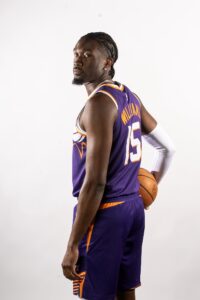 Because he’s a free agent signing whose minimum-salary contract is subject to tax variance, Hayes-Davis counts a little more for tax purposes than he does against the salary cap, but even after taking that into account, the Suns are barely over the tax line — their 14 players on standard contracts put them into the tax by less than $300K.
Because he’s a free agent signing whose minimum-salary contract is subject to tax variance, Hayes-Davis counts a little more for tax purposes than he does against the salary cap, but even after taking that into account, the Suns are barely over the tax line — their 14 players on standard contracts put them into the tax by less than $300K.
That number would increase if Phoenix decides to carry a 15th man into the regular season. For now though, it looks like the team will probably leave an open spot on its regular season roster, with Jordan Goodwin ($200K partial guarantee) and Jared Butler (non-guaranteed Exhibit 9 contract) vying to be the 14th man alongside the team’s 13 players on fully guaranteed deals.
Goodwin’s contract structure may give him the slight edge, though the difference in marginal and the Suns should be able to duck the tax later in the season (if that’s a priority) regardless of which guard they hang onto.
Assuming the Suns keep their 13 players on guaranteed contracts, their three players on two-way deals, and one of Goodwin or Butler, the only other major preseason decisions will likely involve contract extensions. Williams, backup center Nick Richards, and Brooks are all eligible to sign new deals.
Of those three players, Williams is the most likely to get something done before opening night. Richards will remain extension-eligible all season long and probably doesn’t have a long-term future in Phoenix anyway after the club added Williams and Maluach. Brooks, meanwhile, still has two years left on his current contract, so there’s no rush to work out a new agreement with him prior to the 2026 offseason.
Williams, however, would become a restricted free agent next summer if he’s not extended this year. It’s possible the Suns are OK with that outcome. The big man has yet to play a game for his new team, and restricted free agency has favored teams over players this offseason. Still, if wouldn’t be a surprise if Williams and the Suns find a compromise both sides can live with next month. As noted above, teams typically don’t give up multiple first-round picks for players who aren’t in their long-term plans, so it’s safe to assume Phoenix would like to work out a new deal with the former Hornet sooner or later.
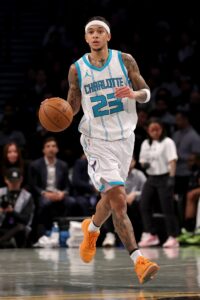
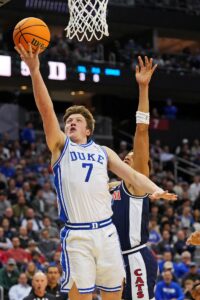 Let’s start with the draft, where the Hornets made four picks in the top 34 and subsequently signed all four players to standard contracts. With the No. 4 overall selection, Charlotte took the relatively safe route by adding Duke sharpshooter
Let’s start with the draft, where the Hornets made four picks in the top 34 and subsequently signed all four players to standard contracts. With the No. 4 overall selection, Charlotte took the relatively safe route by adding Duke sharpshooter 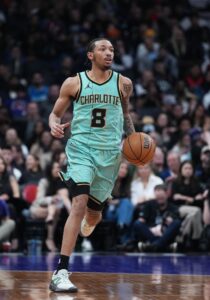 Even after waiving
Even after waiving 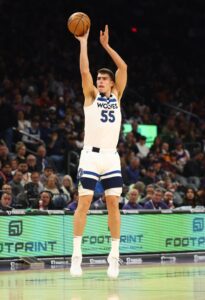
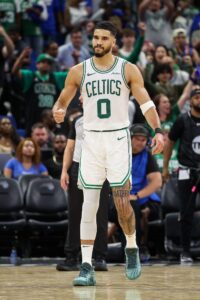 But the Celtics’ path to a second straight championship hit a serious snag in the Eastern Conference semifinals when they blew back-to-back 20-point leads at home to the Knicks, then lost star forward
But the Celtics’ path to a second straight championship hit a serious snag in the Eastern Conference semifinals when they blew back-to-back 20-point leads at home to the Knicks, then lost star forward 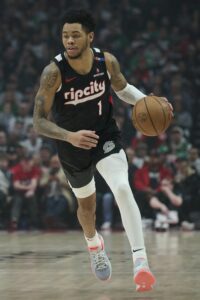
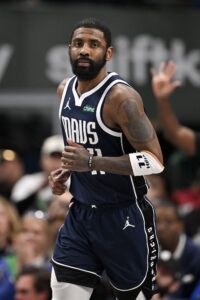
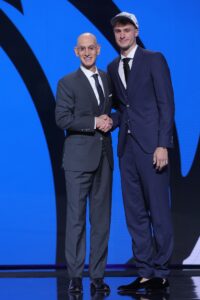 A not-insignificant number of Mavs supporters appeared ready to give up on the team after the front office traded perennial MVP candidate
A not-insignificant number of Mavs supporters appeared ready to give up on the team after the front office traded perennial MVP candidate 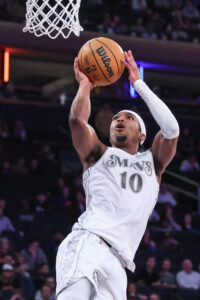 With little room to maneuver below their hard cap, the Mavericks will likely enter the regular season with their current 15-man standard roster. Outside of making a trade, the only option they would have to create some additional flexibility would be to waive Williams, whose minimum-salary contract is only partially guaranteed for $200K for now.
With little room to maneuver below their hard cap, the Mavericks will likely enter the regular season with their current 15-man standard roster. Outside of making a trade, the only option they would have to create some additional flexibility would be to waive Williams, whose minimum-salary contract is only partially guaranteed for $200K for now.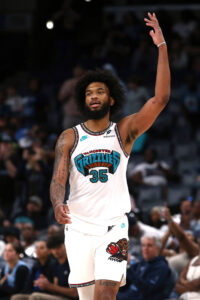
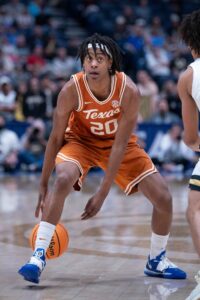 While that Wall/Westbrook trade may feel like ancient history, the traded pick involved in the deal continues to loom large over the franchise. It’s a big reason why the majority of the Wizards’ moves this summer weren’t about adding win-now help, but were instead about creating financial flexibility, taking fliers on former first-round picks, or continuing to accumulate future draft assets. Washington made four trades this offseason and each of them falls into one or more of those three categories.
While that Wall/Westbrook trade may feel like ancient history, the traded pick involved in the deal continues to loom large over the franchise. It’s a big reason why the majority of the Wizards’ moves this summer weren’t about adding win-now help, but were instead about creating financial flexibility, taking fliers on former first-round picks, or continuing to accumulate future draft assets. Washington made four trades this offseason and each of them falls into one or more of those three categories. It’s also not clear if Jones, who was acquired in that aforementioned trade with the Thunder, is someone Washington actually likes or if the front office just made the deal for the second-round pick that was attached to him. He looks like another potential release candidate.
It’s also not clear if Jones, who was acquired in that aforementioned trade with the Thunder, is someone Washington actually likes or if the front office just made the deal for the second-round pick that was attached to him. He looks like another potential release candidate.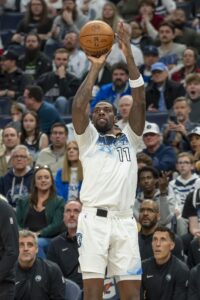
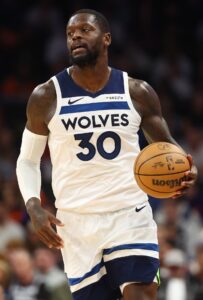 Marc Lore, Alex Rodriguez, and their “
Marc Lore, Alex Rodriguez, and their “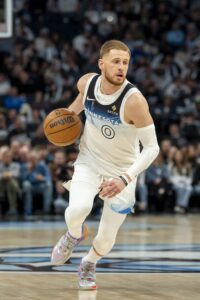 Minnesota also has enough wiggle room below the second apron to add a 15th man on a minimum deal or even using a modest portion of the taxpayer mid-level exception. But the Wolves are far enough into the tax that they’d be paying a penalty of $3.50 per dollar on that 15th man’s salary, so it would have to be someone they really like.
Minnesota also has enough wiggle room below the second apron to add a 15th man on a minimum deal or even using a modest portion of the taxpayer mid-level exception. But the Wolves are far enough into the tax that they’d be paying a penalty of $3.50 per dollar on that 15th man’s salary, so it would have to be someone they really like.